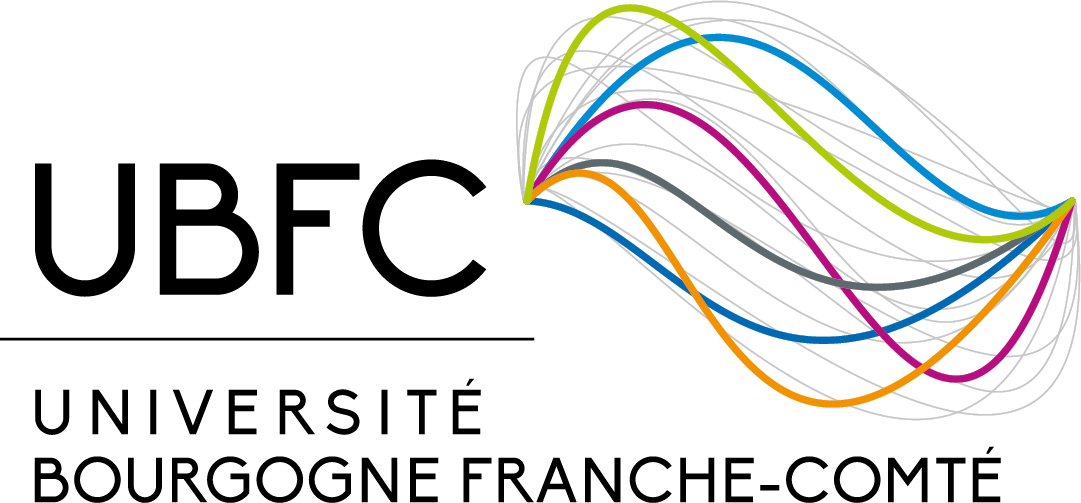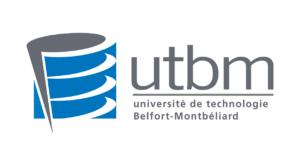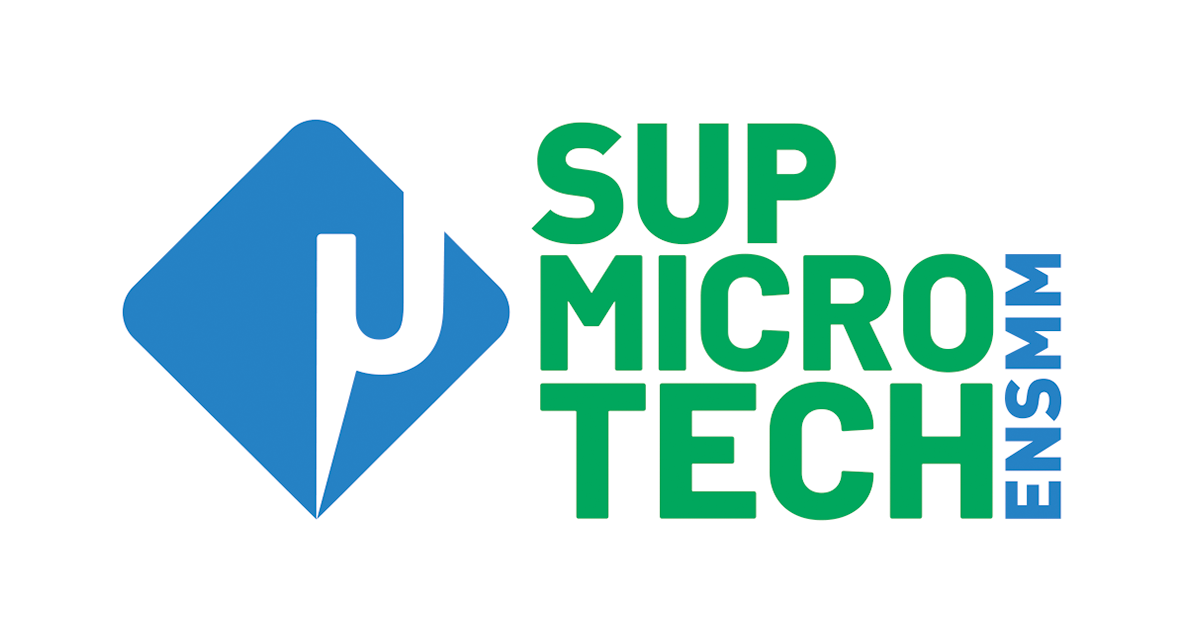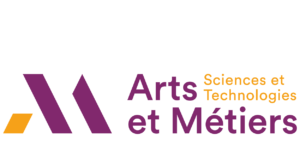European research project
ACHIEVE-ETN aims at training a new generation of scientists through a research programme on highly integrated hardware-software components for the implementation of ultra-efficient embedded vision systems as the basis for innovative distributed vision applications. They will develop core skills in multiple disciplines, from image sensor design to distributed vision algorithms, and at the same time they will share the multidisciplinary background that is necessary to understand complex problems in information-intensive vision-enabled applications. Concurrently, they will develop a set of transferable skills to promote their ability to cast their research results into new products and services, as well as to boost their career perspectives overall. Altogether, ACHIEVE-ETN will prepare highly skilled early-stage researchers able to create innovative solutions for emerging technology markets in Europe and worldwide but also to drive new businesses through engaging in related entrepreneurial activities. The consortium is composed of 6 academic and 1 industrial beneficiaries and 4 industrial partners. The training of the 9 ESR’s will be achieved by the proper combination of excellent research, secondments with industry, specific courses on core and transferable skills, and academic-industrial workshops and networking events, all in compliance with the call’s objectives of international, intersectoral and interdisciplinary mobility.
QuSCo ICB/284
Quantum technologies aim to exploit quantum coherence and entanglement, the two essential elements of quantum physics. Successful implementation of quantum technologies faces the challenge to preserve the relevant nonclassical features at the level of device operation. It is thus deeply linked to the ability to control open quantum systems. The currently closest to market quantum technologies are quantum communication and quantum sensing. The latter holds the promise of reaching unprecedented sensitivity, with the potential to revolutionize medical imaging or structure determination in biology or the controlled construction of novel quantum materials. Quantum control manipulates dynamical processes at the atomic or molecular scale by means of specially tailored external electromagnetic fields. The purpose of QuSCo is to demonstrate the enabling capability of quantum control for quantum sensing and quantum measurement, advancing this field by systematic use of quantum control methods. QuSCo will establish quantum control as a vital part for progress in quantum technologies. QuSCo will expose its students, at the same time, to fundamental questions of quantum mechanics and practical issues of specific applications. Albeit challenging, this reflects our view of the best possible training that the field of quantum technologies can offer. Training in scientific skills is based on the demonstrated tradition of excellence in research of the consortium. It will be complemented by training in communication and commercialization. The latter builds on strong industry participation whereas the former existing expertise on visualization and gamification and combines it with more traditional means of outreach to realize target audience specific public engagement strategies.
MSCA-ITN-2018 : CHANGE Le2i5/50
Cultural heritage (CH) objects have been constantly undergoing changes/degradations over time. In order to pass the legacy of these objects to future generations, it is important to monitor, estimate and understand these changes as accurately as possible. These investigations will support the conservators to plan necessary treatments in advance or to slow down the specific deterioration processes. The dynamic characteristics of materials vary from one object to another and are influenced by several factors. To detect and predict their changes, accurate documentation and analysis are necessary. Over the years, CH digitization using scientific imaging techniques has become more widespread and has created a massive amount of datasets of different forms in 2D and 3D. Several past projects focused on different aspects of technological developments for better digitization methods. There has been less focus on the processing and analysis of these datasets to make the greatest use of them and to their further exploration for monitoring ‘changes’ in CH artefacts for conservation purposes. The lack of adequate digital tools for monitoring these changes is related to material behavior and stability, which still need to be addressed. The proposed project will take cultural heritage digitization to a new level by exploring digital datasets for deeper analysis and interpretation. The main idea is to develop methodologies for the assessment of changes in CH objects by comparing and combining digital datasets captured at different time periods. The validity of the methods has to be evaluated through case studies conducted in collaboration with CH experts and stakeholders. The project is an interdisciplinary approach combining expertise on imaging techniques, computing, CH, and conservation science.
JTI-FCH-2017-1 : Haeolus FCLab/179
The Haeolus project will install a 2 MW electrolyser in the remote region of Varanger, Norway, inside the Raggovidda wind farm, whose growth is limited by grid bottlenecks. The electrolyser will be based on PEM technology and will be integrated with the wind farm, hydrogen storage and a smaller fuel cell for re-electrification. To maximise relevance to wind farms across the EU and the world, the plant will be operated in multiple emulated configurations (energy storage, mini-grid, fuel production). Like many large wind farms, especially offshore, Raggovidda is difficult to access, in particular in winter: Haeolus will therefore deploy a remote monitoring and control system allowing the system to operate without personnel on site. Maintenance requirements will be minimised by a specially developed diagnostic and prognostic system for the electrolyser and BoP systems.
The containerised electrolyser is a standard model carried by project partner Hydrogenics. The integrated system will be housed in a specially erected hall to protect it from the Arctic winter and allow year-round access. The integrated system of electrolyser, fuel cells, and wind farm will be designed for flexibility in demonstration, to allow emulating different operating modes and grid services.
Haeolus answers the AWP’s challenge with the widest possible project scope, with operation modes not limited to the site’s particular needs but extended to all major use cases, and several in-depth analyses (released as public reports) on the business case of electrolysers in wind farms, their impact on energy systems and the environment, and their applicability in a wide range of conditions.
MSCA-RISE-2017 : IPaDEGAN
Partial Differential Equations (PDE’s) undoubtedly are among the main tools for an efficient modelling of physical phenomena. Infinite-dimensional analogues of regular (integrable) behaviour, previously confined to the theory of systems with a finite number of degrees of freedom began to be considered in the middle of the XX century in fluid dynamics, field theory and plasma physics.
The idea that an integrable behaviour persists in non-integrable systems, together with the combination of the state-of-the-art numerical methods with front-line geometrical and analytical techniques in the theory of Hamiltonian PDE’s is the leitmotiv of this research project.
Asymptotic regimes leading to phase transitions both in the theory of dispersive PDEs and the theory of Random Matrices display universality properties which can be analysed both numerically and analytically. The predictive power of numerics and scientific computing can be used both as a testing tool for theoretical models and as a generator of new conjectures.
By focussing the expertise of front line researchers in different areas of Mathematics towards the study of critical phenomena in dispersive PDE’s, we expect results in realms including differential and algebraic geometry, the theory of random matrices, multiscale analysis of PDE’s as well as non-linear models of stratified fluid flows.
The broad interdisciplinary basis and intertwining of methods of Geometry and Mathematical Physics will be instrumental in making the results accessible for the wider community. Younger (Ph.D. and/or Post-Docs) Researchers to be included in such an active and fertile research and training ground, will certainly seize their chance to enhance and broaden their skills.
LIMQUET* ICB/790
Quantum technology means the ability to organise and control the components of a functional system governed by the laws of quantum physics. The goal of this project is to train high-level young researchers through the development of innovative techniques to interface light and matter at the quantum level using atoms, nanostructures and photons, with applications in optics and quantum information processing. Well-trained and versatile researchers are needed to satisfy the demands of this rapidly growing field, in which there is also a strong drive and low threshold for industrial involvement. A prerequisite for success is the enhancement of the close connection between experimental, technological and theoretical studies. The proposed network, Light-Matter Interfaces for Quantum Enhanced Technology, LIMQUET, consists of seven academic and three industrial beneficiaries, complemented by one industrial partner. The academic partners are experienced but reasonably young groups with already established collaborations. The industrial partners have experience in developing and manufacturing high-quality components for research and industrial purposes. Within the Network, we anticipate highlights in (i) light-matter interfaces at the quantum level through the realisation of quantum networks using atoms, ions, and photons, (ii) the interfacing of light with light, in particular for light storage, (iii) adapting strategies originally developed in quantum optics to an integration into designed nanostructures, and (iv) the development of robust tools for quantum control and photonics. The training Network will enhance and use the synergy between the partners to produce a high-level doctoral training program in the field of quantum research and technology, including complementary skills and a pertinent impact of outreach activities. In order to enhance their career perspectives, all the ESRs will be jointly supervised and will be hosted on secondment by a company of the project.
LC-GV-2018 : PANDA Femto/318
To face the climate change, tens of millions of electrified vehicles need to be deployed in the next decade. To meet this challenge, the automotive industry must shift mass production from thermal to electrified vehicles. The challenge is further complicated by electrified vehicles having more components and architectures than thermal vehicles. Realizing this paradigm shift is only possible if there are innovative methods to significantly reduce their development and testing time.
The main goal of PANDA is to provide a unified organisation of digital models to seamlessly integrate virtual and real testing of all types of electrified vehicles and their components. The complexity of developing electrified vehicles becomes manageable by delivering a modular simulation framework. Development partners can share models (in open or in black-box form), avoiding sensitive IP issues and greatly increasing the development flexibility. The proposed method will enable 1) an easy reuse of models for different development tasks, 2) a replacement of real
tests by virtual tests and 3) real-time testing on vehicle level. This method will be integrated in a multi-power open platform based on existing industrial software, enabling Stand-Alone or Cloud Computing. The method will be validated using two existing vehicles (a BEV and a FCV). Also, real and virtual tests of the integrated electrical subsystems of an innovative P-HEV will be performed.
PANDA will reduce the time-to-market of electrified vehicles by 20%, by harmonizing the interaction between the models. In addition, the seamless integration will give developers access to other subsystem models, which will decrease the correlation efforts on components by 20%. The open platform will 1) make it easier for OEMs, suppliers, SMEs and research institutions to interact and 2) enable a fair competition. These innovations will make the European market more flexible, more open to innovation and ultimately more competitive.
CS2-CFP07-2017-02 : SALUTE Femto/377
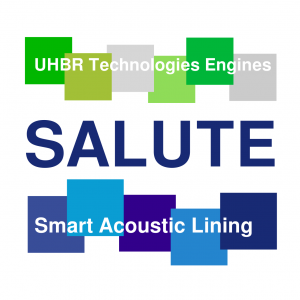
Reducing noise emissions is one of the main design targets driving the development of new aircraft engines, and is therefore a key priority for the competitiveness of the aerospace sector. Ultra-high bypass ratios (UHBR) turbofan engines are expected to equip the next generation of aircraft to maximise efficiency. The noise generated by these engines will concern lower frequencies compared to existing engine technologies. Also, with a thinner nacelle, absorption performance are expected to drop at low frequencies. And with a shorter nacelle, less surface area will be available for acoustic treatments. UHBR engine technologies then represent significant challenges for the design of next-generation acoustic treatments. The SALUTE project will tackle these challenges by developing a new acoustic liner technology based on arrays of small loudspeakers or passive membranes. This innovative approach is able to deliver excellent sound absorption at low frequencies while remaining sufficiently small to fit into thin nacelle geometries. This development will be carried out on three different concepts, which will be compared and down-selected in the course of the project. Conventionally, these acoustic treatments were tested using 2D (i.e. flat) prototypes, which will constitute a baseline configuration of the project. The SALUTE project will go further by testing 3D prototypes with a geometry corresponding to a small-scale fan at the PHARE test facility. This is required to reach TRL4, but will present specific challenges in terms of manufacturing. Secondly, gaining more insight into the physical interaction between the transducers, the control system and the high-speed flow will be necessary. This will be achieved through multi-physics simulations coupling all these sub-systems. With four partners with proven track record of successful collaborative projects on the topic, the SALUTE project will benefit from the latest technological developments on smart acoustic liners.
This project has received funding from the Clean Sky 2 Joint Undertaking under the European Union’s Horizon 2020 research and innovation programme under grant agreement N°821093
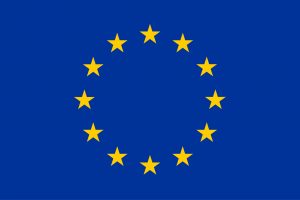
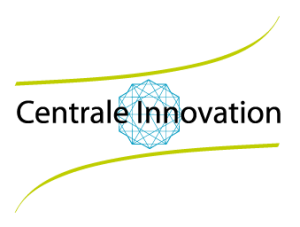
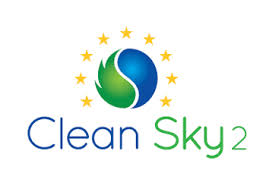
MSCA-NIGHT-2018 : STORIES* uB/UFC/178
We are proposing ERNs in 12 French cities for 2018 and in 13 for 2019. For 12 years, our consortium has organized successful national events, improving year after year the quality of the events, and the strength of the national coordination.
Since the beginning, we have worked on the essence of scientific engagement: a successful, direct encounter between researchers and the public. The strategy is to spark the creativity of both researchers and the public via the proposition of a single general topic (“1001 Stories” for 2018, “Join in the Investigations” for 2019), and a large palette of engaging formats for the ensuing dialogues. Certain of these formats are common to the 12 towns, such as “Dialogues in the Dark”, “Speed-searching”, “Participatory Experiments”. cenography and artistic interventions will ensure a specific atmosphere, in line with the chosen topics: the dream-like quality of tales in 2018, the exciting thrill of investigation in 2019. In each of the 12 cities, between 1000 and 5000 people will attend the Night. More than 1200 researchers will be mobilized every year, reaching a total audience of more than 73,000 persons. The time spent by each visitor at the Night event as measured in previous years, 2.5 h., is high and we aim to increase it. An EU Corner café in each venue will ensure informal exchanges involving foreign researchers. Our proposal focuses on the training of researchers in the “art of the encounter” relying on a science communication training scheme developed by several partners in the framework of a French national project. Lastly, we plan to renew the “Great Participatory Experiment” in 2019. In each city, the public will contribute to a national participatory scientific experiment chosen in 2018 after a challenge involving all our research institutions. Formal partnerships have been established with the Ministries of Culture and of Research. This will ensure further national visibility.
MSCA-IF-2018 : BioSIGNAL uB/257
Oceans play a vital role in removing CO2 from the atmosphere through a mechanism involving algae known as the biological pump. Changing environmental conditions may affect this system and the oxygenation of oceans in ways we cannot at this time predict easily. BioSIGNAL project will use modelling of coupled oceanic ecosystems and geochemical cycles using past records of the biological pump’s reactions to change to understand the mechanics of the process. This will provide invaluable help to scientists and policymakers who are working on next-generation marine ecosystem models projecting the effect of climate change on ocean processes.
The biological pump refers to the mechanism by which carbon is assimilated by photosynthetic algae in the ocean photic zone and subsequently exported to depth upon death of the organisms. The largest part of this export production is generally remineralized as it travels throughout the water column where it depletes dissolved oxygen concentrations. A fraction of the export production may still reach the sea floor, where it is susceptible to be buried, thus inducing a net removal of CO2 from the ocean-atmosphere system. Therefore, the good appraisal of the response of the biological pump to changing environmental conditions is crucial to reasonably predict climate and ocean oxygenation impacts, both associated with past events and as will result from ongoing anthropogenic emissions. However, the behavior of the ecological system in the face of climatic changes and how it impacts the strength and efficiency of the biological pump remains difficult to predict. To address this, the BioSIGNAL project will investigate the sensitivity of the biological pump in a novel way – using a state-of-the-art ecological model including a representation of marine biogeochemical cycles. BioSIGNAL will focus on past periods, which provide a whole evolutionary chronicle to which model outputs can be directly compared. Confrontation of model results with geological records will also allow to develop a mechanistic understanding of the behavior of the ecological system in response to a wide range of environmental perturbations. The proposed approach constitutes an unrivaled opportunity to increase our understanding of the geological record and what it can tell us of relevance to the future. Lessons learned here, both positive and negative, have the potential to help inform the next generation of marine ecosystem models needed to make improved projections of future global change impacts on ocean ecosystems, and hence engaging a broad range of global change scientists and ultimately, policy makers.
MG-2018-TwoStages : UTBM/240
The 36-month PAsCAL project proposes an awareness-driven and large-scale penetration approach to address all issues raised by the majority (if not all) of the general public that hinder the wide market uptake of Connected and Autonomous Vehicles (CAV). It will not only focus on the interaction of the “users” in or near CAV, but also assess the impact of connected transport on people’s well-being, quality of life, and equity. PAsCAL will use of a strongly interdisciplinary mix of innovative tools from both human science and technology, to capture the public’s acceptance and attitude, analyse and assess their concerns, model and simulate realistic scenarios for hand-on practices, and validate the research innovation in a number of trials in the real world. The association to the consortium of special categories of users, such as disabled persons, and of service providers with a global outreach of millions of members and several thousand customers across the EU will ensure results consistency, taking into account major social obstacles/barriers that may hinder the acceptance of CAV and would allow their reuse in new businesses, services and applications.
JTI-FCH-2019 : UFC/305
RUBY aims at developing and implementing a tool able to perform integrated Monitoring, Diagnostic, Prognostic and Control functions for production μ-CHP (micro combined heat and power) and Backup (BUP) systems, based on SOFC (Solid oxide fuel cells) and PEMFC (proton exchange membrane fuel cells). The proposal is the final step toward the production, installation and commercialization of Stationary Fuel Cells (FCSs) with new management functions that will enhance system lifetime, stack durability, availability, reliability and overall performance with improved efficiency. These enhancements will lead to TCO (Total Cost of Ownership) reduction, paving the way toward advanced maintenance service implementation, less cost and increased warranty periods, leading to a better customer satisfaction. RUBY leverages the findings of the last 8 years applied research that contributed to move the FC technologies towards the same maturity of market-available conventional energy conversion technologies. The key-feature of RUBY tool is the Electrochemical Impedance Spectroscopy (EIS)-based advanced monitoring of both SOFC and PEMFC stacks, which has been demonstrated viable for its implementation on FCSs. RUBY will finalize the work on the hardware integration with stack diagnostic and control algorithms as well as with fault detection algorithms for BOP. Then, condition monitoring algorithms will be built along with prognostic and advanced adaptive control functions. The holistic vision of the FCS and a thorough knowledge of the State of the Health will be used to evaluate the lifetime of FCS components for improved supervisory control. Artificial Intelligence-based algorithms will be exploited to elaborate grid and FCS data toward the development of control functions for perspective VPP management and future integration with smart-grid. One-year tests will be conducted in real environment for certified μ-CHP and for BUP installed in a controlled real field to concentrate long-term operations in a shorter timeframe. The tool’s components will begin with TRL5/6 and end with TRL8 for μ-CHP and TRL7 for BUP.
JTI-FCH-2019 : UTBM/UFC/ENSMM/451
Fuel cells have promise in transport applications ranging from busses to ocean ships where they are competing will other well-established technologies. As a complicated and disruptive technology, fuel cells require specialised knowledge to integrate into devices and systems. This is a huge barrier to fuel cell use in companies that don’t have existing experience with, or confidence in fuel cell technologies. The FC community needs to help system integrators develop and optimise fuel cell battery hybrid systems for varied applications.
The overall vision of this project is to develop a fully open source software-hardware (cyber physical) tool that can be adopted as a global standard for FC system design. This platform will enable a system integrator at an SME, with limited fuel cell experience, to rapidly design a fuel cell battery hybrid powertrain for their specific application. The platform will make this development as quick as for combustion or battery powertrains and give the integrator confidence that the system will meet their performance, reliability and durability requirements.
This project will bring together a group of experienced fuel cell specialists to develop this platform (SINTEF, BALLARD and UBFC) along with several system integrators or end users of fuel cells who are leading organisations in their specific field, WESTCON (Maritime), BANKE (Heavy Duty Vehicles), VIVARAIL (Rail), SOLARIS (Busses).
MSCA-IF-2018 : uB/197
Black holes are among the most fascinating objects of the Universe. They are today at the core of our understanding of gravitation. They provide essential hints towards a theory of quantum gravity. They constitute the main emission source of gravitational waves, which will play a central role in future astrophysics. Black holes are also central in mathematical relativity, and the proof of their stability is still today a challenging problem. In the last decades, several analogies between gravity and fluid mechanics have been developed. This interdisciplinary approach has led to many innovative methods and successful results, which have deepened our understanding of black holes, fluids or superfluids. More recently, such an analogy was used by various experimental groups, which were able to successfully reproduce several key effects of black hole physics using fluid systems.
The aim of this project is to develop the mathematical tools to open a new avenue in this interdisciplinary field: the understanding of nonlinear dynamics. In other words, how waves are affected by a background flow or spacetime, and subsequently modify their dynamics. It will focus on three research directions: the analogue of the Hawking effect, superradiant instabilities, and resonances. This project will bring an experienced researcher in analogue models in a strong mathematical physics group, within the Institute of Mathematics of Burgundy (IMB). The objective is to exploit modern mathematics to develop new tools for the joint analysis of black holes and fluids. It will rely on the one hand on mathematical methods of integrable models, and spectral theory of non self-adjoint operators, two fields in which the host group has a traditionally strong expertise, and on the other hand on the knowledge in General Relativity and analogue models of the experienced researcher.
MSCA-RISE-2019 : UFC
The ReACTIVE Too project brings together experts from industry and academia to research and develop reliability and agile design techniques for use in electronics-based systems deployed in safety critical applications found in Automotive and Healthcare environments. These active systems monitor the performance and surroundings of vehicle or assisted living environments to help prevent accidents from occurring and reduce the impact of an emergency. The project will also investigate the possibilities of applying artificial intelligence (ΑΙ), deep learning and prognostics to future electronic systems. Partner companies in both the automotive and the healthcare industries will test concepts developed. The project team is made up of eleven university and industry from Finland, France, Poland and United Kingdom; and a third country partner from China.
CS2-CFP09-2018 : uB/298
Aluminium alloys are used extensively in aircraft due to their high strength-to-weight ratio. A main drawback is that their microstructure is sensitive to corrosion, which generates pits for example. Corrosion is a dynamic process in which propagation rate remains difficult to predict and varies depending on the type of corrosion occurring (pitting, intergranular corrosion, exfoliation, filiform, corrosion-fatigue and stress corrosion cracking). Currently, the presence of corrosion damages may be detected by means of non-destructive tests (NDT). However, corrosion initiation and mechanism behind the defect cannot be distinguished by currently used methods. As consequence, an early detection of corrosion is not done and corrective actions are only performed when become relevant (cracks, loss of thickness). Therefore, aircraft industry needs sensors able to detect both corrosion initiation and its propagation.
The EU-funded U-CROSS project is working on an ultrasonic sensor that combines both active and passive elements for early detection of localised corrosion and for monitoring corrosion propagation over time. The new sensor will greatly aid the aircraft industry in preventing critical damage to aircraft components.
Combined with predictive models, they will allow forecasting how damage progresses when protective paints are degraded. The main objective of U-CROSS is to design, develop and validate the application of ultrasonic corrosion sensors (UCS), combining passive (Acoustic Emission) and active (Pulse Echo Ultrasonic Testing) types, for corrosion monitoring, enabling them for real time detection of early stages of localized corrosion as well as for monitoring the progress of damages with time. A well-defined strategy will be followed to validate its implementation by the development of “model witness blocks” to calibrate sensors, taking into account the intrinsic features of each corrosion mechanism. A thorough selection of the UCSs to be used as cumulative and real-time monitoring will be done depending on corrosion mechanism, and tests will be performed on several indoor and outdoor test rigs. The project will also provide a software tool (wizard type) to enable end-users to design and use sensors and to predict the number of cycles before critical damage occurs. 3 research organisations, 1 NADCAP accredited SME for testing painted parts and 1 European leader in UCSs manufacturing and ultrasonic inspection join forces in U-CROSS to achieve these ambitious objectives, which will guarantee the future commercialization of the result.
MSCA-COFUND-2019 : uB
Respiratory diseases account for one in 8 deaths and a cost of €380 billion annually in the EU of the 28 according to the European Lung White Book (https://www.erswhitebook.org/). In spite of the prominence of lung diseases, research in the respiratory field remains largely underfunded compared to the wider burden of respiratory diseases on society in Europe and beyond, as pinpointed by “ERS 10 Principles for Lung Health” policy document (https://www.ersnet.org/advocacy/eu-affairs/ers-10-principles-for-lung-health).
The ERS/EU RESPIRE3 (MSCA COFUND) Postdoctoral Research Fellowship program is an international, intersectoral and inter-disciplinary program that selects, trains and supports the leaders of tomorrow in the respiratory field. This program aims to address the current level of investment in respiratory research, which is largely insufficient to face the unprecedented healthcare challenges of tomorrow, linked with a fast-rising ageing population and rapid technological advances.
More in particular, in line with the Grant Agreement, the RESPIRE3 program provides Marie Skłodowska-Curie research fellowships to early stage scientists. It aims to strengthen the European Research Area as well as the respiratory specialty by:
- Promoting excellent science in respiratory research in Europe and worldwide through transnational mobility and transfer of knowledge;
- Enabling Europe to become a hub for the exchange of scientists, actively involved in respiratory medicine in both academia and the non-academic sector;
- Fostering the implementation of novel and innovative techniques and therapies as well as the development of new international collaborations; and
- Gathering expertise from various fields, even those not traditionally associated with respiratory research
- Fostering the career development of future leaders in Respiratory research
Olivier Burgy, at UBFC and Inserm U1231, has been awarded a RESPIRE3 fellowship for his project focusing on Extracellular Vesicles in Pulmonary Fibrosis, a part of his research program developed in line of his ISITE-BFC Junior Fellowship.
MSCA-ITN-2019 : UFC
The future economic growth in Europe requires engineers and researchers capable to design, develop and implement new information technologies to support explosive data-driven transformation of economy, public and government activities. Current information, computing and processing technologies strongly rely on the classical digital approaches and architectures developed by von Neumann. It is well understood nowadays that brain- or nature-inspired (neuromorphic) technologies can offer substantial advantage in terms of processing capabilities and power efficiency. The development of analog hardware platforms will allow us to achieve significantly higher bandwidth efficiency, faster processing and higher adaptability through integration of self-learning systems. European Training Network on Post-Digital Computing – POSTDIGITAL is an interdisciplinary training network comprising internationally leading teams from academia, research centres and industry, including IBM, Thales and three highly reputed SMEs. POST-DIGITAL will provide a unique training opportunity to a cohort of 15 early stage researchers (ESRs) in the inter-disciplinary fields of emerging disruptive neuromorphic computational technologies and their applications. The strong industrial presence in the network will bridge the gap between early stage innovation and utilization, providing ESRs with the experience of practical applications and solutions beyond traditional digital methods. POST-DIGITAL has the ambition and the vision to create a new generation of scientific and industrial leaders that will greatly contribute to strengthening Europe’s human resources and industry competitiveness in future digital and post digital economy and technology.
LC-SC3-2020 : UTBM
Within the Energy Union framework, the European Union (EU) is aiming at transforming the energy systems towards a sustainable, low-carbon and climate-friendly economy, putting consumers at its centre. Buildings play a key role in this transition as, on one hand they are responsible for approximately 40% of energy consumption and 36% of CO2 emissions in the EU and, on the other hand, the potential engagement of consumers through the demand-response mechanisms. To enable this transformation, distribution grids will face news paradigms in the ways they operate relying more on flexibility smart grids with capacity to safely host more renewable energy sources (RES) and integrate new loads, such as power to heat/cold, power to gas/liquid and new technologies, as well as electric vehicles (EVs) while advancing in security of supply and affordability. Therefore, this global picture will demand the generation of a new concept of connected ecosystem between energy system players and consumers. Under this scenario, the project consortium accepted this challenge and offers to develop the “REDREAM Project”, which not only will enable the effective participation of the consumers/prosumers in the energy market, but also will drive a profound change turning traditional company’s value chain into value generation chain, based on a revolutionary Service Dominant Logic paradigm. The main objective of the REDREAM project is to effectively move the consumer (as a residential, industrial and tertiary consumer) participation to the centre of the energy market through an open and co-creative ecosystem where all stakeholders will actively interact. This ambitious challenge will require the collection of demand response tools and services (energy and non-energy) capable of enabling the capacity for the consumers of participating in the energy market through an improvement of predictability of consumption patterns and consumer behaviour.
LC-SC3-2020 : uB
RESPONSE supports the Lighthouse cities of Dijon (FR) and Turku (FI) and their Fellow cities Brussels (BE), Zaragoza (ES), Botosani (RO), Ptolemaida (GR), Gabrovo (BU) and Severodonetsk (UA) to facilitate them deliver positive energy blocks and districts. Through RESPONSE, the two LHs will achieve a local RES penetration of 11.2 GWh/y, energy savings of 3,090 MWh/y and an emission reduction of 9, 799 tons CO2eq/y within their districts. To achieve this goal, RESPONSE demonstrates 10 Integrated Solutions (ISs), comprising of 86 innovative elements (technologies, tools, methods), that are being monitored with specific impact metrics (KPIs). It attracts the interest of various stakeholders by generating innovative business models enabling the upscale and replication of the solutions forming a validated roadmap for sustainable cities across Europe and beyond. RESPONSE adopts an energy transition strategy, which includes 5 Transformation Axes (TAs), encompassing the 10 ISs. TA#1 focuses on transforming existing and new building stock into Energy Positive and Smartready. TA#2 focuses on the decarbonization of the electricity grid and the district heating/cooling systems, supporting fossilbased regions in transition and the development of energy communities. TA#3 proposes grid flexibility strategies and novel storage systems for optimizing energy flows, maximize self-consumption and reduce grid stress. TA#4 links existing CIPs with apps and other digital infrastructure to enable digitalisation of services and connected city ecosystems, integrating also smart e-Mobility to promote the decarbonisation of the mobility sector. TA#5 offers interdisciplinary citizen engagement and co-creation practices putting citizen at the forefront of shaping the cities they live in and towards the development of each city’s 2050 own bold city-vision. Special focus is given to creating resilient and safe cities increasing quality of life and lowering the impacts of climate change.
MSCA-ITN-2020 : uB
CARMEN: Communal Art – Reconceptualising Metrical Epigraphy Network will train 11 ESRs to face societal challenges in the fields of intercultural understanding, popular culture, and protection of cultural heritage. Studying poetry in the epigraphic Roman tradition will help to regain an eminent body of European folk art tradition. This fascinating publicly exposed poetry (carmina) combines verbal art forms and material manifestations of cultural expressions for a period of 1000 years. We will edit texts, analyse socialinguistic, aesthetic, and gender topics, and discuss regional phenomena in textual and material culture. Our innovative reconceptualization of this heritage will be an important step to democratise contemporary perceptions of art and to unlock the potential for understanding the heterogeneity of social and cultural performance. Obtaining specialist knowledge on the intriguing CARMEN topic will increase the awareness of cultural diversity and appreciation of popular art. We will take part in the creation of a new community of self-conscious participants in culture-production. Our multidisciplinary and intersectoral program will enable the ESRs to engage in academic research of highest level, as well as in issues of cultural heritage, knowledge transfer and contemporary non-elite culture all over Europe: A perfect match to the overall concept of the ETN-objective of enhancing mobility and employability.
MSCA-ITN-2020 : UFC
CHRONIC aims at delivering a cohort of highly-skilled and informed future research leaders trained in understanding and integrating, into risk-assessment practice, the long-term, low-dose chronic chemical exposure and their interactions with other environmental stressors. CHRONIC research will support improved decision-making in risk assessment based on uncertain and potentially conflicting information, and in the development of scientifically-based monitoring strategies. The focus on low chronic exposure to contaminants in different environmental organisms (macrophytes, invertebrates, vertebrates) and end-of-line systems (freshwater, sediment, soil) allow for a training that is broader than that achieved from conventional narrower one-system concept generally included in PhD-programs and in standard protection goals. Thus, CHRONIC represents a paradigm shift in environmental risk assessment (ERA) methods and practices needed to deal with current and future contaminant challenges. CHRONIC will include 13 PhD projects aimed at developing tools and approaches to identify relevant nonstandard modes of toxicity for low chronic chemical exposure and integrate these with environmental stressors. CHRONIC includes academic institutions, research centres, government institutions, SMEs, and an NGO all with extensive experience in education and training and a high state-of-the-art scientific and technical expertise and infrastructure. The program will therefore lay the basis for an integrated approach to ERA that includes non-standard yet ecologically relevant endpoints and low chronic exposure as key elements. CHRONIC include training-by-research, joint courses covering technical, scientific, ethical, and transferable skills. Students will also engage actively in communication to scientific and public communities and be enrolled in an ambitious intersectional networking exchange plan to increase employability and provide a broad perspective to their future career plan.
MSCA-NIGHT-2020 : uB
The LINCS project is the collective effort of 12 partners and the legacy of 14 years of participation in the ERN as a consortium. The ambition is to organize events in 14 different French cities (specifically focusing on medium-sized cities, where research is happening, but science engagement activities are less frequent), sharing the same objectives, theme, activities, approach to popularization, and at the same time involving local researchers.
Convinced that the quality of the exchange with researchers is the key factor in enriching and refining the citizens’ vision of research, we create intimate, warm, direct encounters between the public and researchers, with a specific focus on the 15-30 age range. To achieve this, the 1,200 researchers involved in the project will be coached and trained by mediators, artists or scenographers, using different methods. A long-lasting effect on researchers will be one outcome, as ERN is an occasion for them to start a long journey in science engagement.
The planned activities enable privileged encounters and/or shared, fun experiences in direct contact with professional researchers. The “EU corner” will be enlivened by the participation of EU researchers, games and live radio broadcasts. The French Ministry of Culture will financially support the event for the 3rd year, fostering the participation of researchers in social sciences and humanities; the Ministry of Research will also continue its support. One partner is in charge of strategies for reducing the environmental impact of the events. The LINCS project is based on an original tagline, a theme to intrigue visitors and stimulate the creativity of researchers and mediators. A theme which testifies to our ambition to set up almost intimate meetings between researchers and visitors. Meetings which promise to unveil the untold stories of an exciting profession. A slogan that evokes both secrets and curiosity: “Little Nocturnal Secrets” (“petits secrets nocturnes”). But shh…!
